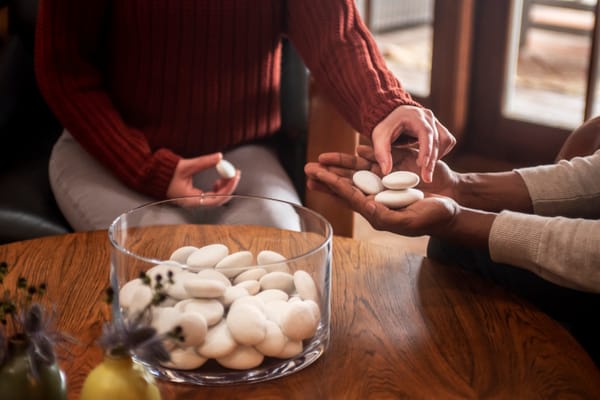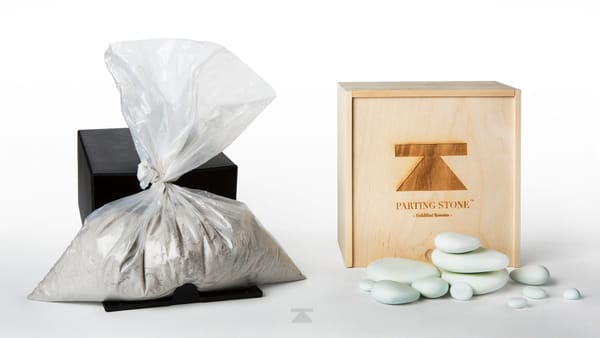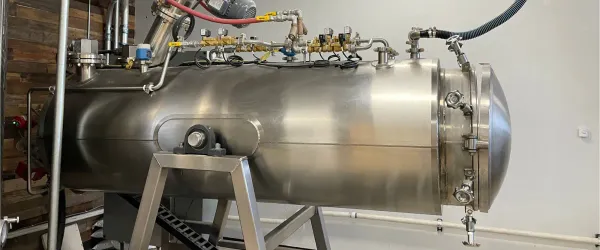Memorial Research and Education: Making Informed Choices
Memorial research and education for making informed choices. Learn about memorial processes, quality standards, and provider evaluation to honor your loved one.

Key Takeaways
- Thorough memorial research helps families make informed decisions that align with their values and needs during a difficult time
- Understanding different memorial processes, from traditional burial to emerging technologies like cremation solidification, provides families with meaningful choices
- Quality standards, provider credentials, and transparent pricing are essential factors when evaluating memorial service options
- Legal protections like the FTC Funeral Rule ensure families receive itemized pricing and the right to choose services that matter to them
- Taking time to research memorial options is a meaningful act of care, not a delay in the grieving process
Reflections on love, loss, and the ways we carry them.
When families begin the quiet, heavy work of researching memorial options, they deserve clarity, time, and permission to follow their own rhythm. Start with the basics: learn the different processes. Burial, flame cremation, alkaline hydrolysis, and newer choices like solidification so you know what each one practically entails and how each feels in your hands and in your heart. Ask about quality standards, certifications, and independent testing. Request itemized pricing and timeline expectations. Check licenses, read reviews, and, very important — verify legal protections in your state. These are not morbid details; they are the scaffolding that keeps a tender choice steady.
Think also about fit: how does an option align with your family’s culture, faith, and rituals? Will it allow the small acts of memory you imagine such as a place to visit, a stone to carry, a plate at the table? Trust providers who answer patiently, who welcome facility tours, and who refuse to rush you.
Susan from Albuquerque told me she felt lost with her husband’s ashes until she found an option that honored both tradition and touch: “The stones gave me something I could hold. A way to fold him into everyday moments.” That’s the test. Practical research matters, yes, but so does whether a choice gives you permission to grieve, to remember, and to keep them near in ways that make sense.
Parting Stone’s approach is that of transparency, scientific verification, and respect for timing, models what good memorial care should feel like: informed, humane, and always optional until you are ready. Take your time. Your timeline is the right timeline.
Cathy Sanchez Babao
Parting Stone Grief Coach
When someone you love has died, the weight of making memorial decisions can feel overwhelming. You might find yourself reading articles late at night, comparing options, and wondering if you're considering everything you should. This impulse to gather information isn't overthinking or procrastination. It's a thoughtful response to one of the most significant decisions you'll make in honoring someone's memory.
What Should You Research When Learning About Memorial Options?
When researching memorial options, families should explore: the different memorial processes available (traditional burial, cremation, alkaline hydrolysis, solidification), quality standards and certifications providers hold, transparent pricing structures, legal protections under state and federal law, provider credentials and reputation, timeline expectations for services, and how different options align with cultural or religious values. This comprehensive approach helps ensure decisions reflect both practical needs and meaningful intentions.
This guide offers a framework for memorial research and education. Whether you're planning ahead or making decisions after a recent loss, the information here can help you understand what questions to ask, what factors to consider, and how to evaluate the options available to you. You'll find no pressure to decide quickly and no suggestions that one choice is inherently better than another. Instead, this is about building the knowledge foundation that allows you to make choices that feel right for your family.
Understanding Different Memorial Processes
Memorial options have expanded significantly over recent decades. According to the National Funeral Directors Association, the national cremation rate reached 61.9% in 2024, reflecting changing preferences and the growing availability of alternatives to traditional burial. Understanding these different processes helps families consider what might best serve their needs.
Traditional Burial
Traditional burial involves embalming, a viewing or visitation, a funeral service, and interment in a cemetery plot. This option provides a permanent location for remembrance and follows practices many families find culturally or religiously meaningful. The process typically takes 3-7 days from death to burial, depending on when services are scheduled.
Families choosing burial might consider factors like cemetery location, perpetual care policies, grave marker options, and whether the cemetery allows personalization. Some families find comfort in having a specific place to visit, while others appreciate that burial aligns with longstanding family traditions.
Cremation Options
Cremation transforms remains through heat and flame, a process that typically takes 2-3 hours depending on various factors. The Cremation Association of North America notes that families who choose cremation have numerous options for what happens afterward, including traditional services before cremation, memorial services after, or more intimate family gatherings.
After cremation, families receive cremated remains, often called "ashes" though they're actually bone fragments processed into a fine, sand-like texture. These remains can be kept in an urn, divided among family members, scattered in meaningful locations (where legally permitted), or transformed through emerging processes.
Many families appreciate cremation's flexibility. Services can be scheduled at times that work for distant family members, and the remains can be transported or divided in ways that burial doesn't allow. However, some families find that receiving remains in their ash form feels incomplete or difficult to interact with in meaningful ways.
Alkaline Hydrolysis (Water Cremation)
Alkaline hydrolysis, sometimes called water cremation or aquamation, uses water, alkaline solution, pressure, and heat to accelerate natural decomposition. This process is legal in approximately 28 states and growing in availability. The result is similar to flame cremation: bone fragments that are processed into a powder and returned to families.
Proponents note that alkaline hydrolysis uses less energy than flame cremation and produces no direct emissions. Families considering this option should verify its availability in their state and whether providers they're considering offer this service.
Cremation Solidification
Cremation solidification represents a newer approach in memorial options. This process transforms cremated remains into smooth, touchable stones through scientific processes. Rather than receiving remains in their ash form, families receive 40-80+ solidified remains that can be held, divided among family members, displayed, or carried.
Susan from Albuquerque, New Mexico 🖤 shared her experience: "I was so worried about what to do with my husband's ashes. The idea of them sitting in an urn felt wrong somehow, but I didn't want to scatter them and have nothing tangible left. When I learned about solidification, it finally felt like the right answer. Now I have these beautiful stones I can actually touch and hold when I miss him."
This process addresses concerns some families have about interacting with traditional cremated remains. The solidified form provides a tangible connection that some find more comforting than ash, while still allowing for the flexibility cremation provides in terms of division among family members or keeping remains in the home.
Green and Natural Burial
Natural burial options minimize environmental impact by forgoing embalming, using biodegradable caskets or shrouds, and allowing natural decomposition. The Green Burial Council provides certification for burial grounds and funeral homes offering these services. These options appeal to families with environmental concerns or those seeking simpler, less commercialized approaches to death care.
Natural burial availability varies by location, and families interested in this option should research whether green burial grounds exist in their area and what specific practices those locations follow.
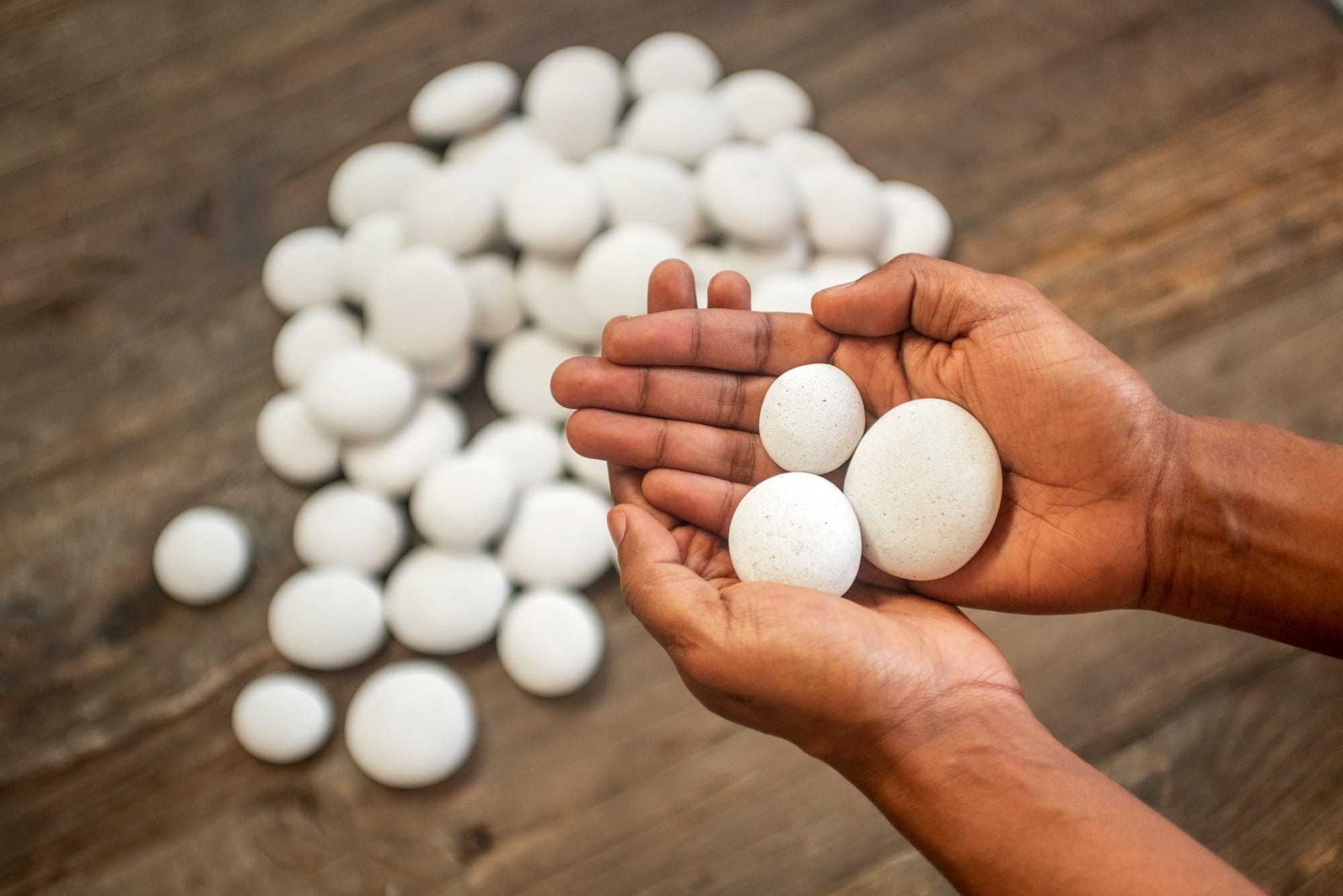
A New Way to Hold Close What Matters Most
We transform cremated remains into beautiful, touchable stones that bring comfort when you need it. Something you can hold, share, and keep close.
Quality Standards and Certifications
Understanding quality standards helps families evaluate whether a provider maintains professional practices and adheres to industry best practices. While licensing requirements vary by state, several national organizations provide certification and oversight.
Professional Licensing and Credentials
Every state requires funeral directors and embalmers to be licensed, though specific requirements vary. You might ask providers about their licensing status, how long they've been practicing, and whether they hold memberships in professional organizations. The National Funeral Directors Association and state funeral director associations set ethical standards and provide continuing education for members.
For cremation-specific services, facilities should comply with state regulations governing crematory operation. Some states require specific crematory operator licensing, while others include this under general funeral director licensing. Families can ask to see licenses and certifications, and providers should be willing to share this information readily.
Industry Certifications
Several industry certifications indicate a provider's commitment to quality standards. The International Cemetery, Cremation and Funeral Association offers certification programs for funeral professionals. Some cremation providers pursue additional certifications related to their specific processes.
For newer technologies like cremation solidification, families might ask about scientific partnerships, quality testing protocols, and whether the process has been independently verified. Providers should be transparent about how their process works and what standards they maintain.
Red Flags to Watch For
Certain practices should raise concerns during your research. These include providers who refuse to give itemized pricing, pressure you to make immediate decisions, discourage you from comparing options, won't allow facility tours, or make claims that seem too good to be true.
Rebecca from Portland, Oregon 🖤 noted: "When I was researching options for my mother, one funeral home kept pushing me to decide that same day. They said certain options wouldn't be available if I waited. I'm so glad I stepped back and contacted other providers. The place I eventually chose gave me all the time I needed and answered every question without making me feel rushed."
Trust your instincts. If a provider makes you uncomfortable or won't provide clear, straightforward answers to your questions, it's worth exploring other options.
@chloebluffcakes Thank you @partingstone 🤍 youve given me an unimaginable gift. One day I will share these with my little sister and carry her wherever we go in life together. #grief #partingstone #loss
♬ Repeat Until Death - Novo Amor
Provider Evaluation Framework
Evaluating memorial service providers involves considering multiple factors beyond just pricing. The relationship you have with your provider can significantly impact your experience during an already difficult time.
Essential Questions to Ask
When contacting providers, consider asking these questions to build a complete picture of what they offer:
About Services:
- What specific services are included in your packages, and what costs extra?
- Can I purchase only the services I want, or must I buy packages?
- What happens if I want to provide my own casket, urn, or other merchandise?
- How do you handle special requests or personalization?
- What is your timeline for completing services?
About Processes:
- Can you explain your process in detail from start to finish?
- How do you ensure accurate identification throughout the process?
- What quality control measures do you have in place?
- Can I see your facilities if I'd like to?
- What happens if something goes wrong?
About Transparency:
- Do you provide itemized pricing in writing before I commit?
- Are there any fees not included in your initial quote?
- How do you handle payment, and what options are available?
- What is your refund or cancellation policy?
- Can you provide references from families you've served?
Reputable providers welcome these questions and answer them clearly and thoroughly. According to the Federal Trade Commission's Funeral Rule, funeral providers must give you itemized prices in person and, in many cases, over the phone.
Verifying Credentials and Reputation
Beyond asking providers directly about their credentials, families can verify information through state licensing boards, Better Business Bureau ratings, and online reviews. However, approach online reviews thoughtfully. Memorial services are emotional experiences, and reviews may reflect individual circumstances that differ from your own.
You might also ask for references from families the provider has served, though recognize that not every family feels comfortable being contacted during their grief. Professional association memberships (NFDA, CANA, ICCFA) indicate a provider's commitment to industry standards, though lack of membership doesn't necessarily indicate poor quality.
Relationship and Communication Indicators
Pay attention to how providers communicate with you during initial contact. Do they listen to your questions and concerns? Do they respect your timeline for decision-making? Do they explain options without steering you toward more expensive choices?
The provider you choose will guide you through a significant experience. Some families prioritize working with someone in their immediate community, while others are comfortable with providers who serve a broader geographic area. What matters most is finding a provider whose approach aligns with what you need during this time.
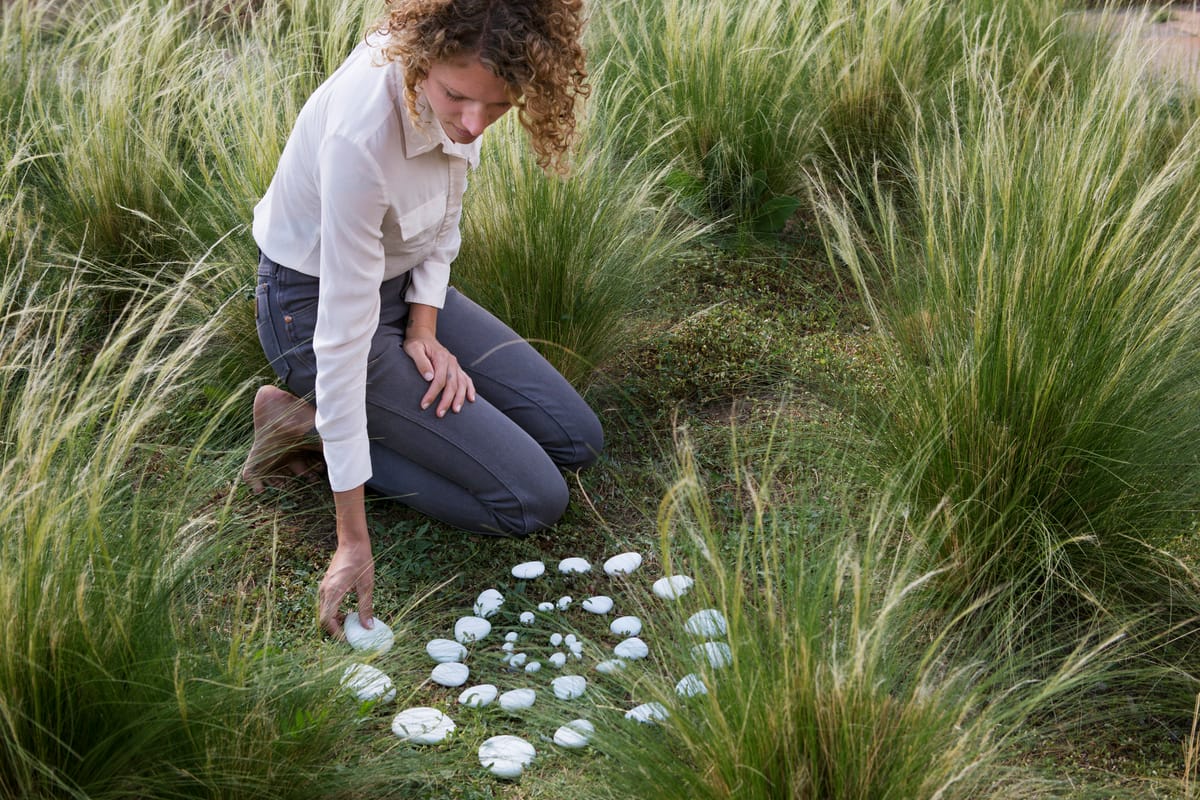
Cost Transparency and Financial Planning
Understanding memorial service costs helps families make informed financial decisions and avoid unexpected expenses. The Federal Trade Commission's Funeral Rule provides important consumer protections in this area.
Understanding the FTC Funeral Rule
The Funeral Rule, established in 1984 and updated periodically, gives families specific rights when arranging funeral or memorial services. Providers must give you itemized price lists, allow you to choose only the services you want (with limited exceptions), and provide pricing information over the phone in many situations.
You cannot be required to buy a casket if you're choosing cremation. Providers cannot charge handling fees if you purchase a casket elsewhere. They must disclose in writing any legal requirements they cite, and they cannot misrepresent legal requirements.
These protections apply to funeral homes, mortuaries, and memorial service providers, though some exemptions exist for certain religious or non-profit organizations. Understanding your rights helps you advocate for yourself during a vulnerable time.
Typical Cost Ranges
Memorial service costs vary widely based on geographic location, specific services chosen, and provider pricing. According to NFDA's 2023 data, the median cost of a funeral with viewing and burial was $7,848, while the median cost of a funeral with cremation was $6,971.
These figures represent median costs and include only basic services. Additional expenses might include:
- Cemetery plot purchase: $1,000-$5,000+
- Grave marker or headstone: $1,000-$10,000+
- Cremation urn: $50-$5,000+
- Memorial stationery and acknowledgment cards: $100-$500
- Flowers: $200-$1,000+
- Obituary notices: $200-$1,000+ depending on publication
For families choosing cremation solidification, costs differ from traditional cremation products. Parting Stone's solidification service is priced at $2,495 for human remains (compared to urns ranging from $50 to $5,000 or jewelry pieces that might cost $100-$1,000 but hold only small amounts of remains). This single service transforms all cremated remains into 40-80+ stones that can be divided, kept together, or shared according to family preferences.
Hidden Fees to Watch For
Some providers include fees that aren't immediately apparent in advertised prices. These might include:
- "Basic services fee" or "non-declinable fee" covering overhead costs
- Transportation fees for moving remains
- Refrigeration or storage fees
- "Cremation container" requirements (though the Funeral Rule limits what can be required)
- Rush fees for expedited services
- Weekend or holiday service fees
Ask providers to explain every line item on their price list and clarify what is optional versus required by law versus required by their business policies.
Payment Options and Financial Assistance
Most providers offer several payment options, including payment plans, credit cards, or arrangements to be paid from estate funds or life insurance proceeds. Some providers work with insurance companies to facilitate direct payment.
For families facing financial constraints, options might include:
- Immediate or direct cremation without services ($500-$3,000 depending on location)
- County or social services assistance for those who qualify
- Veterans benefits for service members (contact the VA for information)
- Crowdfunding through platforms specifically designed for memorial expenses
- Negotiating payment plans with providers
Financial difficulty during loss adds stress to an already painful time. If cost is a concern, be direct with providers about your budget constraints. Many are willing to work with families to find solutions that meet both financial and memorial needs.
The cremated remains of Garth's mother felt meaningless sitting in his clothing closet for 2 decades. Learn how solidified remains helped dissolve the relationship barrier he felt with her and integrate her memory into daily life.
Timeline Considerations
Understanding timelines for different memorial processes helps families set appropriate expectations and plan accordingly. Timelines vary based on the type of service chosen, legal requirements, and provider schedules.
Legal and Documentation Requirements
Most states require certain documentation before cremation or burial can occur. This typically includes a death certificate signed by a physician or medical examiner, and in the case of cremation, authorization from a medical examiner or coroner. These requirements exist to protect public health and ensure proper identification.
Processing these documents typically takes 1-3 days, though delays can occur if a death requires investigation or if the certifying physician is unavailable. Some states impose waiting periods between death and cremation (often 24-48 hours), while others don't mandate specific waiting times.
International deaths or the need to transport remains across state or national borders add complexity and time to the process. Families dealing with these situations should ask providers about their experience with such arrangements and expected timelines.
Service Timing Options
Families can generally schedule memorial services according to their needs rather than on fixed timelines. Traditional burial typically occurs within 3-7 days of death, though families might choose longer timelines if arranging travel for distant family members or coordinating with religious calendars.
Cremation provides more flexibility in timing. Some families hold services before cremation, creating an experience similar to traditional burial viewings. Others schedule memorial services days, weeks, or even months after cremation, allowing time for family to gather or for planning more personalized events.
The choice to delay services depends on many factors: family members' travel needs, cultural or religious considerations, emotional readiness, or practical constraints like venue availability. No timeline is universally "right" for memorial services.
Processing and Delivery Expectations
Different memorial processes require different completion times. Flame cremation itself takes 2-3 hours, but the complete process (including preparation, cremation, and processing remains) typically takes 3-7 days. Alkaline hydrolysis takes 3-16 hours for the process itself, with similar overall timelines when including documentation and preparation.
For cremation solidification, families should expect longer timelines because of the additional processing involved. The scientific process of transforming cremated remains into solidified form takes approximately 2-3 months from when the provider receives cremated remains to when stones are shipped to families. This timeline reflects the careful, scientifically-controlled process required to create properly formed, stable stones.
David from Denver, Colorado reflected on this: "The wait for the solidification process was longer than I initially expected, but the funeral director explained it was because of the science involved. When I finally received my wife's stones, I understood why it took time. They were absolutely beautiful, perfectly smooth, and exactly what she would have wanted. The quality made the wait worthwhile."
Understanding these timelines upfront helps families plan appropriately and avoid disappointment from unmet expectations.
Seasonal Considerations
Certain times of year create challenges or opportunities for memorial planning. Weather can impact burial and cemetery services, particularly in regions with harsh winters. Some families choose to delay interment until spring when weather permits graveside services.
Holidays and anniversaries create emotional complexity. Some families find comfort in scheduling memorial services near meaningful dates, while others prefer to separate these occasions. There's no right answer, only what feels appropriate for your situation.
For families considering solidification, planning around significant dates requires understanding the 2-3 month processing timeline. If you hope to receive solidified remains before a particular holiday or anniversary, coordinate with providers well in advance to ensure appropriate timing.
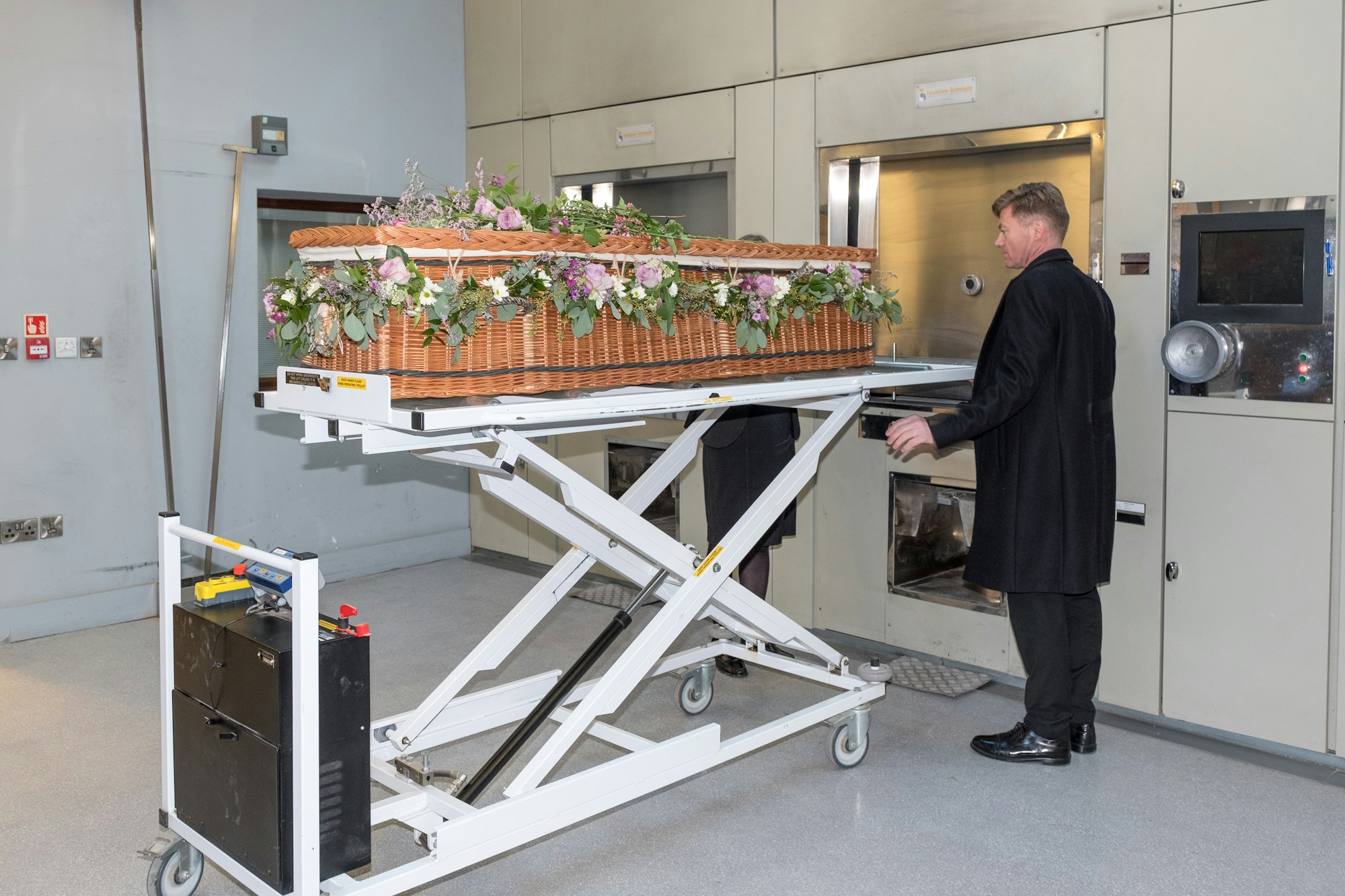
Legal and Regulatory Landscape
Legal requirements governing memorial services vary by state and sometimes by locality. Understanding relevant laws helps families navigate requirements and exercise their rights as consumers.
Federal Protections
The FTC Funeral Rule provides nationwide consumer protections. Under this rule, funeral providers must:
- Give you itemized price lists for caskets, outer burial containers, and other merchandise
- Provide a general price list at the beginning of your discussion about arrangements
- Quote prices over the phone if you ask
- Allow you to select only the services you want (with limited exceptions)
- Disclose legal requirements in writing
The rule prohibits certain practices, such as claiming embalming is required when it's not, refusing to use a casket you purchased elsewhere, or claiming a casket or vault is required to prevent cemetery grave collapse (though cemeteries themselves may require vaults for grounds maintenance).
Violations of the Funeral Rule can be reported to the FTC. While the FTC doesn't resolve individual disputes, reports help them identify patterns and take enforcement action against providers who consistently violate the rule.
State-Specific Requirements
State laws govern licensing, facility standards, and specific procedures. Some states require funeral directors to be involved in all aspects of death care, while others allow families more autonomy in certain situations. Laws regarding home funerals, green burial, and alternative disposition methods vary considerably.
Cremation authorization requirements differ by state. Some require authorization from next of kin in a specific order of priority, while others accept written instructions from the deceased person made before death. Understanding your state's requirements helps avoid delays or complications.
For families considering scattering cremated remains, state and federal laws regulate where this can occur. Scattering on private property requires permission from the property owner. Scattering on federal lands, in national parks, or at sea has specific regulations families must follow.
Consumer Protection Resources
If you believe a provider has violated your rights or engaged in deceptive practices, several resources can help:
- Your state's funeral regulatory board or licensing agency
- Your state's Attorney General's office, consumer protection division
- The Federal Trade Commission, particularly for Funeral Rule violations
- Better Business Bureau for filing complaints
- State or local consumer advocacy organizations
Documentation helps if you need to file a complaint. Save all written materials, price lists, contracts, and correspondence. Note dates, times, and specific details of conversations or incidents that concern you.
Cremated remains can feel messy and meaningless. Instead of receiving a box of ashes following cremation, you can now receive a collection of stones. Solidified remains let you feel connection with the remains of your departed. Turn your ashes into stones at https://partingstone.com
Cultural and Religious Considerations
Memorial practices reflect diverse cultural, religious, and personal values. Understanding how different traditions approach death care helps families honor what matters most to them, even as they navigate practical considerations.
Faith-Based Perspectives
Many religious traditions offer specific guidance regarding death care practices. Jewish tradition often emphasizes prompt burial, with cremation traditionally not permitted in Orthodox communities though accepted by Reform and some Conservative communities. Islamic tradition requires specific preparation of the body and burial, typically within 24 hours. Catholic teaching has historically preferred burial but now accepts cremation provided it doesn't demonstrate denial of belief in resurrection.
These represent general patterns within diverse faith communities. Individual families may interpret religious guidance differently, and many providers have experience accommodating various religious requirements. When religious guidance intersects with your preferences for memorial options, speaking with religious leaders in your community can help you navigate decisions in ways that feel spiritually appropriate.
Cultural Traditions and Adaptation
Cultural practices around death and memorial vary tremendously. Some traditions emphasize elaborate public mourning, while others favor more private expressions of grief. Some cultures view visiting and interacting with remains as essential, while others prefer minimal contact.
As memorial options expand, families sometimes adapt traditional practices to incorporate new possibilities. For instance, some families who value burial traditions but face practical constraints (cost, distance from family burial grounds) find that keeping solidified remains allows them to maintain a sense of connection similar to what cemetery visits provide.
Maria from Santa Fe, New Mexico 🖤 explained: "In my family's Mexican tradition, we've always maintained close connections with our ancestors through altar-building and regular cemetery visits. When my father chose cremation, I worried about losing that tangible connection. The solidified remains gave us something we could incorporate into our ofrenda during Día de los Muertos. It honored both his wishes and our family's traditions."
Interfaith and Blended Family Considerations
Families with diverse religious backgrounds or blended families may need to navigate different preferences and traditions. This might mean finding providers experienced in accommodating multiple faith requirements, scheduling separate services that honor different traditions, or creating hybrid approaches that respectfully incorporate elements meaningful to different family members.
These situations benefit from open communication early in the process. When possible, discussing preferences before death occurs (though this isn't always possible) helps avoid conflicts during acute grief. When families must navigate these decisions after a loss, patience, respect for different perspectives, and willingness to compromise help everyone feel their values are honored.
Decision-Making Tools and Resources
Making memorial decisions involves processing information while experiencing grief. Tools and frameworks can help organize your thoughts and ensure you're considering factors important to you.
Research Checklist
As you gather information, this checklist helps ensure you're covering important areas:
Process Understanding:
- What memorial processes are available in my area?
- What does each process actually involve?
- What form will remains take with each option?
- What flexibility does each option provide for services and personalization?
Provider Evaluation:
- Have I contacted at least 2-3 providers for comparison?
- Have I received itemized price lists from each?
- Do I understand what's included versus what costs extra?
- Am I comfortable with how each provider communicates?
- Have I verified licensing and credentials?
Practical Considerations:
- What's my realistic budget, and what options fit within it?
- What timeline am I working with?
- Are there legal or regulatory requirements I must meet?
- Do I need to coordinate with family members in different locations?
- Are there cultural or religious factors I need to accommodate?
Personal and Family Factors:
- What would my loved one have wanted (if known)?
- What will provide comfort to me and my family?
- How do we envision interacting with remains over time?
- Are there specific wishes about division among family members?
- What feels meaningful and appropriate for how we remember this person?
Comparison Framework
When evaluating specific options, structured comparison helps prevent overwhelm. Consider creating a simple table comparing providers or processes across factors that matter to you:
| Factor | Option A | Option B | Option C |
|---|---|---|---|
| Total Cost | |||
| What's Included | |||
| Timeline | |||
| Form of Remains | |||
| Flexibility for Sharing | |||
| Provider Communication | |||
| Alignment with Values |
This visual comparison makes it easier to see how options differ and which might best meet your needs. Remember that the "best" choice isn't determined by checking the most boxes but by finding the option that aligns with what matters most to your family.
Additional Learning Resources
Many organizations provide educational resources about memorial options and grief support:
- National Funeral Directors Association: Consumer information about funeral planning and options
- Cremation Association of North America: Education about cremation processes and options
- Federal Trade Commission: Consumer rights and protections
- The Conversation Project: Resources for discussing end-of-life preferences
- National Alliance for Grieving Children: Support resources for families with grieving children
These resources provide factual information without promoting specific providers or products. They can supplement your research and help you formulate questions for providers you're considering.
The Solidification Option: An Educational Case Study
Understanding specific memorial processes in depth helps illustrate what thorough research reveals. Cremation solidification offers a detailed example of how newer technologies work, what scientific processes involve, and how families evaluate innovative options.
The Scientific Process
Cremation solidification uses a patented process developed in partnership with Los Alamos National Laboratory. The process begins with cremated remains (bone fragments that have been processed into a fine, sand-like consistency after flame cremation). Through carefully controlled scientific procedures, these remains are transformed into solid, stone-like forms.
The process involves specific temperature, pressure, and timing parameters that must be precisely maintained to create properly formed stones. Unlike ceramics or concrete casting, this is a solidification process that binds the actual cremated material into cohesive, durable forms. The result is 40-80+ smooth, touchable stones that contain the complete original cremated remains with nothing added or taken away.
Each batch is tested to ensure proper formation and durability. The stones are naturally occurring variations in color (ranging from white to gray to tan), reflecting the unique composition of each person's remains. This scientific approach requires the 2-3 month processing timeline discussed earlier, as rushing the process would compromise the quality and structural integrity of the final stones.
Transparency and Quality Standards
Providers of solidification services should demonstrate transparency about their process, timeline, and pricing. Parting Stone provides detailed information about how solidification works, what families can expect regarding stone quantity and appearance, and exactly what the service includes.
The $2,495 price for human remains solidification covers the complete process: receiving cremated remains from funeral homes or families, the full solidification procedure, quality testing, packaging in a handcrafted wooden box, and shipping to families anywhere in the United States. There are no additional fees for stone quantity, expedited services aren't available (because the scientific process can't be rushed), and the price remains consistent regardless of geography.
This transparent pricing model differs from traditional cremation products where costs vary dramatically. Urns might cost $50 for a basic model or $5,000 for high-end options, and many families purchase multiple vessels if they want to divide remains. Cremation jewelry allows only small amounts to be incorporated, often requiring families to choose between keeping remains together or sharing them.
Addressing Practical Family Needs
Solidification addresses several practical challenges families face with traditional cremated remains. The stones can be divided naturally among family members without the symbolic weight of "splitting" someone's ashes or the practical difficulty of trying to portion ash evenly. Some families keep all stones together, while others divide them among children, grandchildren, or even close friends.
The touchable nature of the stones provides tangible connection some families find more comforting than interacting with ash. Stones can be held during difficult moments, carried in pockets or bags when traveling, displayed openly without concerns about dust or spillage, or incorporated into memorial spaces in ways that feel meaningful.
Jennifer from Austin, Texas 🖤 described her experience: "My teenage daughter was really struggling after her dad died. We got his solidified remains, and she picked out a few stones that she keeps in a small pouch. She takes them with her when she needs to feel close to him—to her soccer games, on the first day of school, even to his favorite hiking trails. Having something she can hold and carry has helped her so much. I don't think ash would have provided that same comfort."
Comparing Solidification to Traditional Options
Understanding how solidification compares to other cremation options helps families determine whether this choice might suit their needs:
Traditional Urn Storage:
- Keeps remains together in one container
- Requires decisions about display, storage, or eventual scattering
- May feel formal or impersonal to some families
- Price varies widely ($50-$5,000+)
- Suitable for families wanting remains in a traditional memorial object
Cremation Jewelry:
- Holds only small amounts of remains
- Provides something wearable for personal connection
- Requires storing remainder of remains separately
- Multiple pieces needed if several family members want jewelry
- Price varies ($100-$1,000+ per piece)
- Suitable for families wanting portable, personal memorial items
Scattering:
- Fulfills wishes for return to nature or meaningful locations
- Provides sense of release or freedom
- Leaves no tangible remains for future connection
- No cost beyond any ceremony involved
- Suitable for families comfortable with no physical remains remaining
Solidification:
- Transforms all remains into tangible, touchable form
- Allows both keeping together and dividing among family
- Provides interactive memorial objects
- Single price covers complete transformation ($2,495)
- Requires 2-3 month processing timeline
- Suitable for families wanting tangible connection plus flexibility
None of these options is universally "better." What matters is which aligns with how your family envisions interacting with and honoring your loved one's memory over time.
When Solidification Might Fit Your Needs
Certain situations might lead families to consider solidification:
- Multiple family members want to keep some remains, but dividing ash feels uncomfortable
- You want something more interactive than an urn but more substantial than jewelry
- You value having a tangible memorial but don't want traditional burial
- You envision carrying or traveling with remains
- You want to display or incorporate remains into your home openly
- You're concerned about the fine, dust-like texture of cremated ash
- You want a memorial option that young family members can interact with safely
Solidification might not fit needs when:
- Budget constraints make the $2,495 investment unfeasible
- The 2-3 month timeline doesn't align with when you need remains returned
- You're certain you want to scatter all remains rather than keep them
- Religious or cultural traditions specifically require remains in ash form
- You prefer traditional memorial products like urns or burial options

Conclusion: Taking the Time You Need
The research you're doing right now represents meaningful care for someone you love. Whether you're planning ahead, making decisions after a recent loss, or simply educating yourself about options you hadn't previously known existed, this process of gathering information and thoughtfully considering choices matters.
Memorial decisions don't have universal right answers. What provides comfort, honor, and meaning varies from person to person and family to family. The value of thorough research isn't arriving at a predetermined "best" choice, but building confidence that the choices you make align with your values, needs, and how you want to remember someone important to you.
As you continue this process, trust yourself to know when you have enough information to make decisions. Some families need extensive research and comparison, while others find clarity more quickly. Both approaches are valid. Give yourself permission to take the time you need without pressure or guilt.
When you're ready to move from research to action, the providers you've identified through your research can guide you through next steps. Remember that reputable providers welcome questions, provide clear information, and respect your timeline for decision-making.
Next Steps
Consider these as you move forward:
- Review the research checklist to ensure you've covered areas important to you
- Reach out to 2-3 providers for detailed conversations and price comparisons
- Discuss options with family members who'll be involved in decisions
- Consult religious or cultural advisors if faith traditions influence your choices
- Give yourself time to process information before finalizing decisions
- Trust that thoughtful research prepares you to make choices you'll feel confident about over time
If you'd like to learn more about specific aspects of memorial options, including detailed information about cremation processes, quality standards, or the scientific basis for newer technologies like solidification, exploring those topics in depth can further inform your decisions.
Additional Resources:
For more information about making informed memorial decisions, you might explore:
- How cremation solidification works—detailed explanation of the scientific process
- Understanding quality standards—what to look for in provider credentials
- Questions to ask providers—comprehensive list for evaluating options
- Real family stories—experiences from families who've navigated these decisions
Frequently Asked Questions
How long does memorial decision-making typically take?
Memorial decision-making timelines vary significantly based on individual circumstances, with no standard duration. Some families make decisions within days, while others take weeks or months, particularly when cremation provides flexibility in timing. Legal requirements (documentation processing, mandatory waiting periods in some states) typically take 1-3 days, but families can schedule services and finalize arrangements according to their own needs. What matters most is taking the time you need to make informed choices, not adhering to arbitrary timelines. Reputable providers respect each family's individual pace.
What consumer protections exist for memorial services?
The Federal Trade Commission's Funeral Rule provides comprehensive consumer protections for memorial services nationwide. Under this rule, providers must give itemized price lists, allow selection of only desired services, provide pricing information over the phone when requested, and disclose legal requirements in writing. The rule prohibits requiring unnecessary purchases, charging handling fees for caskets purchased elsewhere, and misrepresenting legal requirements. State licensing boards provide additional oversight of funeral providers, and many states have specific consumer protection laws governing death care services. If you believe a provider violated your rights, you can file complaints with your state's funeral regulatory board, Attorney General's office, or the FTC.
How do families typically divide cremated remains among family members?
Families divide cremated remains using several approaches, each with different considerations. Some purchase multiple small urns, though this means making immediate decisions about portions since ash is difficult to divide evenly later. Cremation jewelry allows small amounts to be incorporated into wearable pieces, though the majority of remains must be stored or handled separately. Some families use small keepsake containers from providers, dividing ash into portions for different family members. Solidified remains offer another option where the natural multiplicity of stones allows intuitive division without the symbolic weight of "splitting" someone. Each family's approach depends on how many people want remains, what form feels most comfortable, and practical considerations about fair division.
What happens if I'm unhappy with a memorial service provider?
If you're dissatisfied with a provider during the arrangement process, you can typically transfer services to another provider, though you may owe payment for any goods received or services already performed. Once services are complete, addressing dissatisfaction becomes more complex. First, communicate concerns directly to the provider in writing, documenting specific issues. Many providers want to resolve problems and maintain their reputation. If direct communication doesn't resolve issues, you can file complaints with your state's funeral regulatory board, the Better Business Bureau, your state Attorney General's consumer protection division, or the FTC for Funeral Rule violations. Small claims court might be an option for financial disputes. Prevention through thorough research, getting everything in writing, and clearly communicating expectations helps avoid dissatisfaction.
Are newer memorial technologies like solidification safe and reliable?
Evaluating newer memorial technologies requires examining the scientific basis, quality controls, provider transparency, and track record. For cremation solidification specifically, the process was developed in partnership with Los Alamos National Laboratory and uses established scientific principles of material binding under controlled conditions. The process has been used since 2019, serving over 10,000 families, providing some track record of reliability. Safety considerations include whether the process treats remains respectfully, produces stable final products, and comes from reputable providers with quality testing protocols. Families considering any newer technology should ask detailed questions about the scientific process, see examples of final products, verify any claimed partnerships or certifications, understand timelines and expectations clearly, and request references from other families if possible. Reputable providers of innovative services welcome these questions and provide transparent, detailed information.
What if religious traditions conflict with memorial preferences?
Navigating conflicts between religious traditions and personal memorial preferences requires careful thought and often consultation with religious leaders in your community. Many faith traditions have evolved their approaches to memorial practices over time; for instance, the Catholic Church shifted its position on cremation in the 1960s. Individual interpretation within faith communities varies, and some religious authorities may offer more flexibility than others regarding adaptation of traditional practices. Options for managing conflicts include: speaking with multiple religious leaders to understand the range of perspectives within your tradition, exploring whether adaptations exist that honor both religious values and personal preferences, considering compromise approaches that incorporate important elements of tradition while accommodating preferences, and ultimately making peace with whatever decision feels most aligned with your core values. Some families find that newer options like solidification can be adapted to honor traditional values—for example, keeping remains together (which some traditions prefer) while providing tangible connection in new forms.
References
Cremation Association of North America. (n.d.). Cremation options. https://www.cremationassociation.org/cremationoptions.html
Federal Trade Commission. (2024). The FTC Funeral Rule. Consumer Information. https://www.consumer.ftc.gov/articles/ftc-funeral-rule
Green Burial Council. (n.d.). What is green burial? https://www.greenburialcouncil.org/
International Cemetery, Cremation and Funeral Association. (n.d.). Home. https://www.iccfa.com/
National Funeral Directors Association. (2024). 2023 NFDA cremation and burial report. https://www.nfda.org/news/statistics
National Funeral Directors Association. (2021). Alkaline hydrolysis FAQs. https://www.nfda.org/news/in-the-news/nfda-news-releases/id/4884/alkaline-hydrolysis-faqs
The Conversation Project. (n.d.). Start your conversation. https://theconversationproject.org/
U.S. Department of Veterans Affairs. (n.d.). Burials and memorials. https://www.va.gov/burials-memorials/




